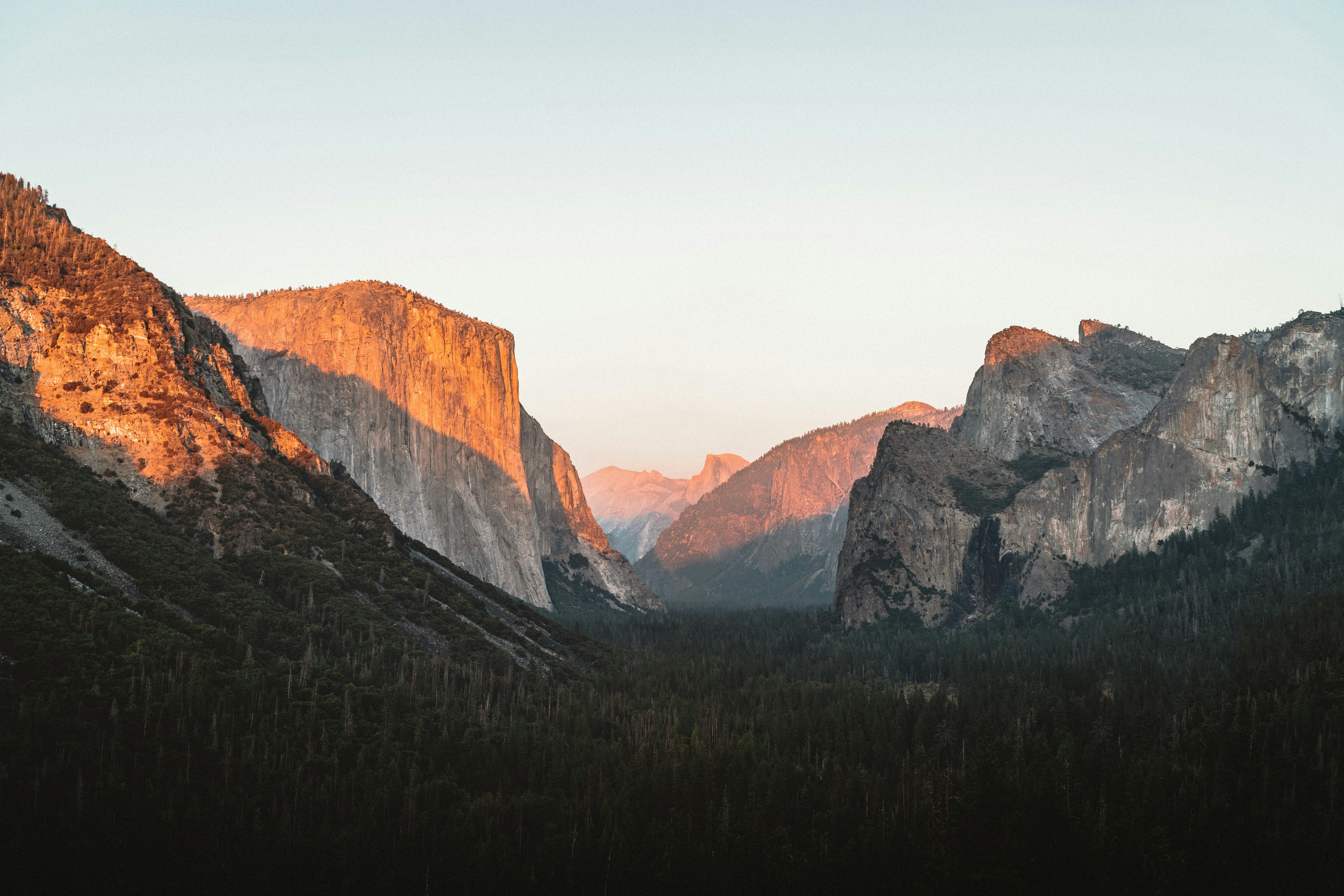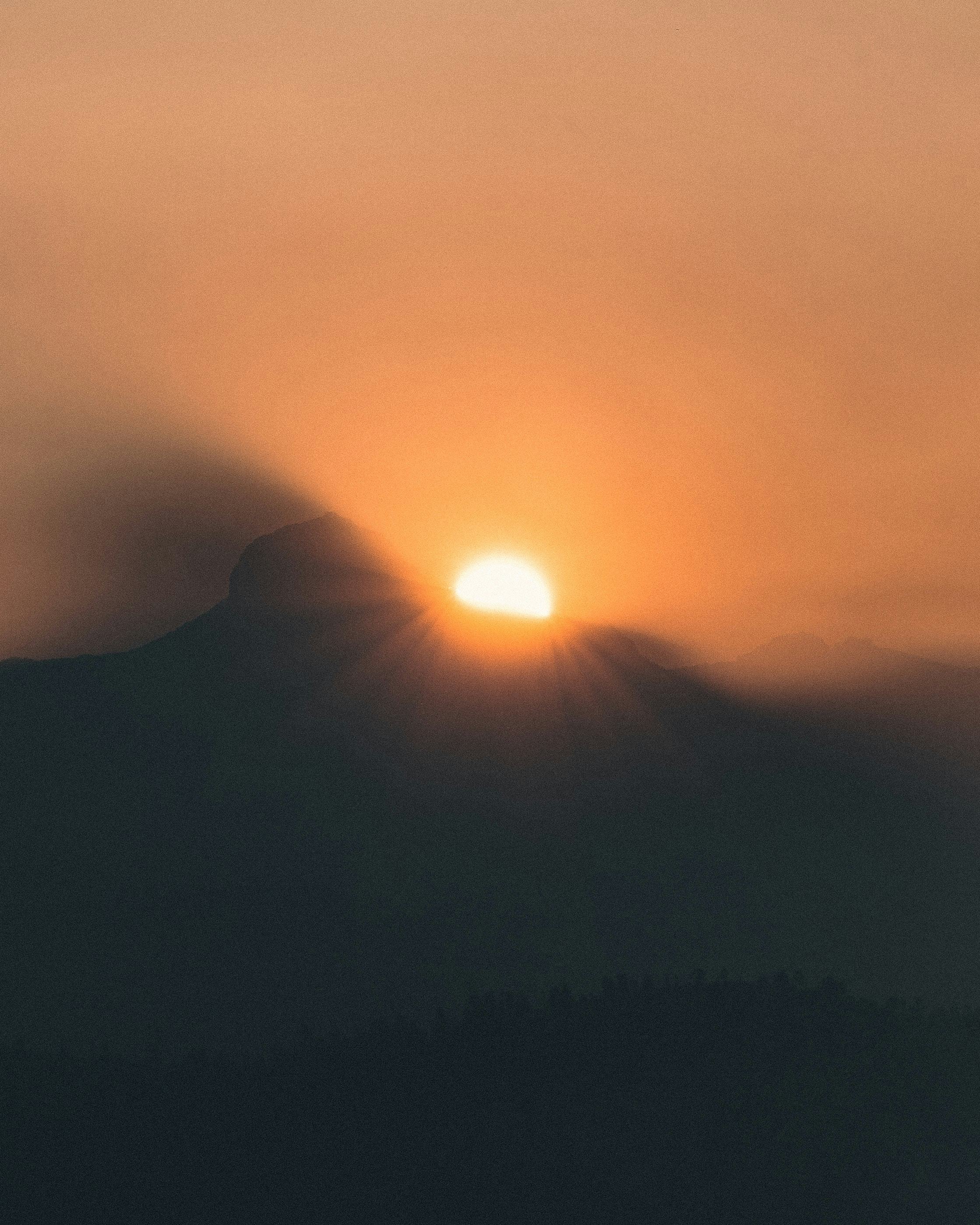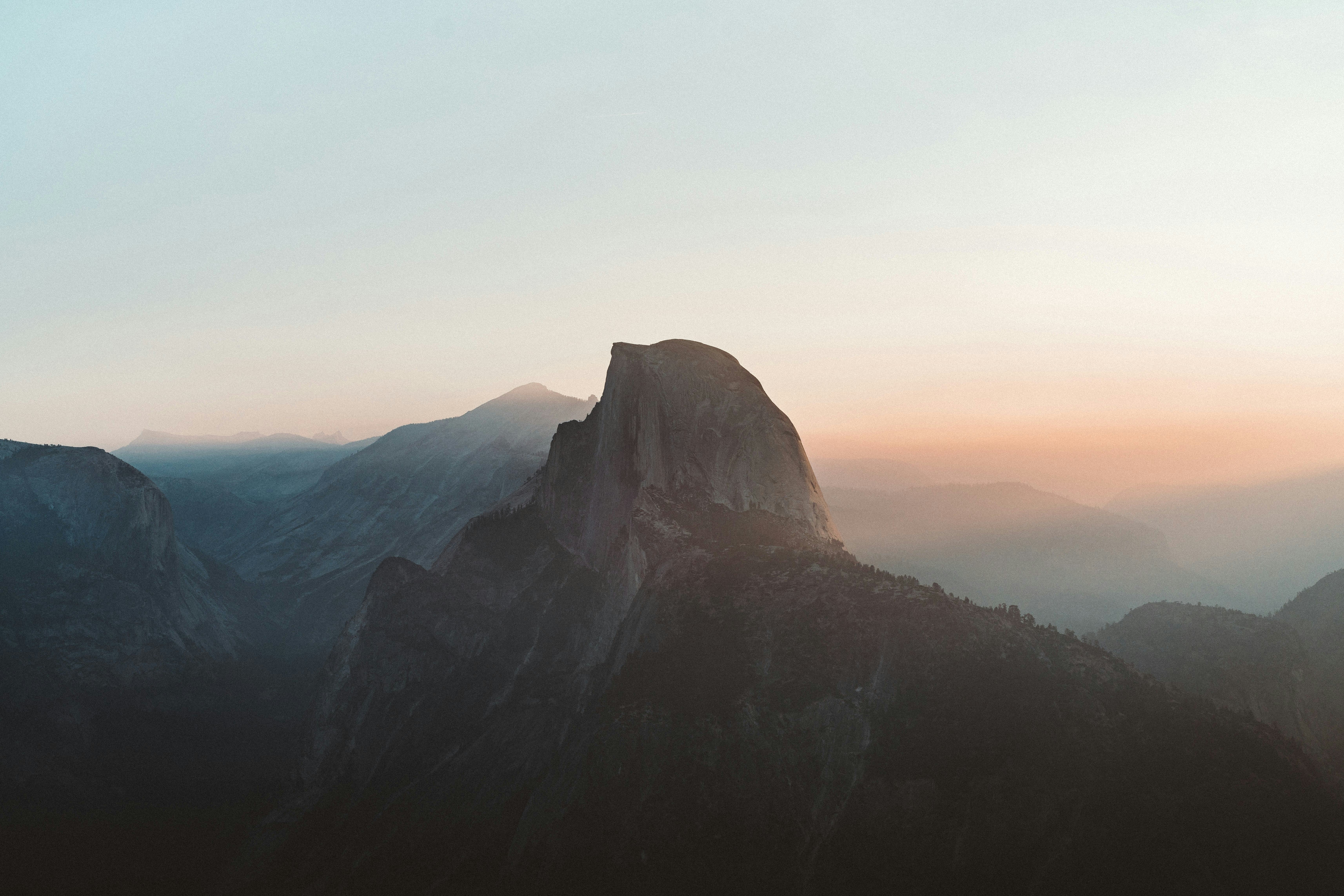How to Make a Ham and Cheese Sandwich Essay
A Simple Ham and Cheese Sandwich

A whisper of cloud stretched across the sky, as we stepped out of the lodge. We still had a half-hour to wait for the sun to come up, but the cloud already burned orange-mauve, spreading a pale rose glow onto the snow blanketing the meadow. Other than a stray bird call, no sound broke the silence.
The one-way road that loops up the north side of Yosemite Valley and down the south was empty of cars. On that mid-February morning in 1995, without traffic or crowds, my husband Richard and I could have been late nineteenth-century travelers who had journeyed to Yosemite by train, to witness this wonderland of sheer granite cliffs, tall tumbling waterfalls, lakes, and the roaring, boulder-strewn Merced River.
We were out early for a photo walk that would skirt the famed Yosemite Valley, guided by a park photographer. Living only a four-hour drive away in San Francisco, Richard and I had been to Yosemite several times. But this was our first winter visit. The chance to see the meadows covered in white, and Mirror Lake frozen, had enticed us. The other big draw was that the park might be less crowded.
While this was our sole glimpse of Yosemite covered in white, it wasn't our first, nor would it be our last, trip to the park. Over the years, we would spend so much time in Yosemite, I could trace the evolution of the park and our relationship through those visits.
For our first visit, two years before the snowy photo walk, we stayed in a small plain room at Yosemite Lodge, heading out each morning to grab coffee and breakfast in the cafeteria. I loved the moment when I first stepped outside and got a peek at the sun caressing the granite walls of Half Dome, setting the rock on fire. A former summer camper, and later counselor, Richard adored eating in the cafeteria with all the other hikers and climbers, feeling as if he had journeyed back in time to his beloved camp in the Los Altos Hills, albeit with more plush accommodations.
The park didn't seem overrun with people then, as it would later become. When we pedaled rented bikes through the valley, hiked the trails or sat on the bank overlooking the Merced River, I felt the park's splendors existed only for us.
By our next stay in a Camp Curry tent cabin, my relationship with Richard had moved beyond the days of deep infatuation. We fought, sometimes for hours, the spats easily set off.
I can't recall what ignited angry words that day. By the time the sky grew dark, we'd both apologized. The moon was full in a sky packed with stars. We'd signed up to take a nighttime tram ride.
Riding in the open-air car, my head back, so as not to miss the sight of Half Dome, El Capitan, and Three Cathedral Rocks bathed in moonlight, I felt Yosemite soothe the hurt places, as I held Richard's warm hand in mine. Thirty minutes into the ride, the tram stopped at El Capitan's base. The driver suggested we look up. There, at various points, we saw the winking lights of climbers balanced on the narrow ledges of that massive rock, until sunrise, when they would begin final ascents to the top.
When we lived in San Francisco, Yosemite was the closest we came to wilderness. During that time, rents had climbed, and Richard and I opted to move to a city where we could buy a house.
A few weeks after settling into the Queen Anne Victorian cottage we'd bought in a Portland, Oregon neighborhood filled with vintage homes and sprawling gardens, I learned that it only took an hour to reach wilderness areas, where it was possible to hike trails to mountain lakes, waterfalls, and meadows bursting with wildflowers, and never run into another soul.
Living in Portland, we didn't return to Yosemite even once. During that time, our wilderness experiences consisted of day hikes around Mt. Hood, sixty miles east of Portland, and vacations in Central Oregon, where we enjoyed the region's wild and scenic rivers, sparkling mountain lakes and snow-covered Cascade peaks. In addition to the absence of people, Oregon had something much of California lacked – waterfalls and creeks that flowed all year.
One thing Oregon and Yosemite did have in common, though, was fire. As the years went by, Oregon's fire season, like California's, started earlier and lasted later. We made plans for summer vacations in Central Oregon, knowing our stay might be spoiled by a wildfire forcing the closure of roads and trails or that smoke would obscure the mountain views and make breathing hard.
At the end of a dozen years, we returned to Northern California. By that time, Richard and I had been together for more than twenty years. Our love for one another had deepened. Spats that marred our earlier days were a thing of the past.
A year after moving back to California, I reserved a cabin, not far from the southern entrance to Yosemite. It was late September, which I had assumed to be the off-season. Our first day in the park, Richard circled the parking lot near Yosemite Lodge for a good half-hour. We were almost ready to give up trying to find a place to leave the car, when I spotted a black SUV backing out.
Once out of the car, we were surrounded by crowds. I needed to stay focused, to avoid running into someone. This was more like walking on a downtown street or in a shopping mall, instead of a national park. A fire had also been raging for weeks in a remote section of Yosemite, and dark gray smoke smothered the valley, obscuring the splendid views we'd come to enjoy.
The crowds and smoke made it impossible to call up the deep warm feelings I'd previously had for the park. By the end of the week, I told Richard my love for Yosemite might be gone.
The following September, though, we did go back. I had made a reservation for a week's stay in a cabin located on the eastern side of the Sierra Mountains, a half-hour drive from the Tioga Pass entrance to Yosemite. To reach the cabin, we needed to pass through the park.
The morning was clear, as we headed down narrow Tioga Pass Road. A few miles east, the trees framing the road thinned out and vistas opened up.
We pulled over and stopped here and there, to scramble up rocky ledges and gaze out. Unlike in Yosemite Valley, crowds didn't block the view. When Richard and I hiked a short distance from the parking lot, we left nearly all the people behind.
In the afternoon, we pulled off the road, into the parking lot next to Tenaya Lake. Unlike in the valley, we had our choice of spots. Other than our Honda, there wasn't a single car in the lot. We got out and followed a dusty path to the shore, where we set our folding chairs down, facing shimmering azure water, surrounded by gray-white granite mountains. Only one other couple was in sight, tossing a ball to a brown dog, on the lake's opposite shore.
This was what we had come for. A serene lake. Almost no one else around.

The following days, Richard and I discovered another Yosemite that made us feel like we had when first falling in love with the park. At its eastern edge, Yosemite turned lush, with lakes and rushing streams, even in the third year of a drought. The land felt wild, while the elevation climbed. At close to ten thousand feet, the sky appeared saturated with color.
Beyond the park's eastern boundary was a rugged, awesome landscape of soaring granite peaks, high-altitude alpine lakes, and bubbling thermal pools and streams. The trail surrounding wide blue Saddlebag Lake began at over ten thousand feet. Our second day when we set out on the trail, wind whipped across the lake, causing white caps to scatter across the dark blue water. As Richard and I followed the narrow rocky path, with the lake on our right, a boulder-strewn hillside on our left, and a view of North Peak straight ahead, we took our time. At that elevation, it was impossible to rush.
Not a soul appeared, as we picked our way along the trail. Eventually, we left Saddlebag behind and headed for Greenstone Lake, moving deeper into the Hoover Wilderness. It was mid-September, late in the season. Up the hill, rustic Saddlebag Lake Resort had been closed for several weeks, and wouldn't reopen until May or June, depending on the snow. Beauty and solitude, and the rhythm of setting one olive green hiking boot down and then the other, steadying myself by anchoring the tip of my hiking stick on the uneven, rocky terrain, made me glad. This trip was not going to disappoint.
Before hiking much longer, Richard and I reached Greenstone Lake. The name, I saw, could not have been more perfect. The lake was deep emerald, strewn with large and smaller boulders. A reflection of white clouds floated on the shimmering surface, the wind occasionally creating ripples.
Richard dropped his backpack onto a rock and said he was headed to the lake's other side, to scout out photos. My photographer husband couldn't wait another second, having sized up the scenery and formatted pictures he hoped to take in his mind.
I scrambled out of my backpack, which was heavy with bottles of water, binoculars and lunch, and set it down on a dry rock that looked like a good place to rest. In the old days, Richard's eagerness to run off and photograph would have had me feeling bad. It had the opposite effect now. I craved time alone outdoors, to look, ponder, and write.
The rest of the week, we explored the riches the area had to offer. Even at the most popular area lakes, I could count the number of people on one hand. On several hikes, I experienced the thrill of being surrounded by stunning landscape and no people. Even within Yosemite, we didn't have to make an effort to leave crowds behind. We were also far enough from the fire raging to the northwest that smoke didn't drift over, turning a startlingly blue sky a drab gray or brown.
By the time we were sitting on the bank of Virginia Lake, not far from the Tioga Pass entrance, we had wrestled with most of the problems married couples face. We'd managed to weather the rough times and stay together, deepening a bond that now seemed unbreakable.

There were many reasons why our relationship endured. The most important, I think, was that we had an unexplainable connection and bond right from the start, which remained, even in the hardest times. I also have to believe that the time we spent outdoors in places like Yosemite, with our shared love of the beauty only found there and nature's healing grace, was – and still remains – a critical piece.
Of all my Yosemite memories, though, none stands out more than that winter visit. These days, when Yosemite Valley has lost some of its appeal for me, because of the crowds and the scourges of drought, fire and smoke, I treasure that time.
The morning we got out before the sun came up, the only other people we encountered were the handful joining us for the photo walk. As our compact group walked silently behind the guide in a ragged line, I spied small animal prints, cutting across the otherwise unmarked snow. The valley was so quiet, I imagined I could hear the famous granite walls of Half Dome and El Capitan singing, as they were being caressed by the first rays of morning light.
Unlike the other members of our group, I wasn't carrying a camera. While they were unfolding tripods and anchoring them in the snow, I attempted to record images of our surroundings in my mind, hoping to remember how everything looked and felt, so I could eventually write it down.
A small gray fox sauntered across the meadow. He didn't appear the least bit concerned about spotting us. I couldn't take my eyes off his thick, fluffy tail. Suddenly, he stopped walking, frozen in place, his eyes cast down. Then he leapt feet into the air, returning to the ground in a crouch.
The following day, Richard and I decided to take a hike. We'd never been to a park when there was snow on the ground, so it didn't occur to us that we might be better off donning cross-country skis or snowshoes. Instead, we grabbed our hiking sticks, layered on cotton turtlenecks, sweatshirts, and windbreakers above that, and laced our hiking boots up.
The bridge over the Merced River was covered with snow, topped by a layer of sparkling ice. Slowly and carefully, we made our way across. The paved walkway was shaded by tall dark trees. The sun hadn't risen high enough for the rays to begin to warm it.
The trail, which began on the opposite side, was also dark, lined with tall, snow-covered cedar and pine. We started uphill, our boots sinking with every step into the soft snow, at least a foot or more. The going was slow, with the deep snow forcing us to lift each foot up and out, wait while one boot sank down, and then raise the other one.
A light breeze rustled the branches and heaved wet snow onto our wool hats. It was a slog, but a lovely one. Having lived in San Francisco for years, I couldn't remember the last time I'd walked in snow. The experience brought back memories of childhood.
The uphill climb soon took its toll. It was a workout, as hard as a step class at the gym, with the added exertion of pulling our feet up and out of the snow. After about an hour and a half, Richard and I agreed that we were ready to turn around. That's when the fun started. Now it was possible to use the soles of our boots as downhill skis, sliding, instead of plodding down.
By the time we reached the bridge, it was past noon. With the sun straight overhead, the ice and snow of the early morning had melted. Where it had been treacherous to walk before, puddles of water now stood.
We dropped down on a bench overlooking the river. The air had warmed enough that it was possible to take off several layers we'd previously donned.
Before leaving that morning, we had bought simple ham and cheese sandwiches from a vending machine in the lodge. Starving now, I ripped the cellophane wrapper off my sandwich as fast as possible, lifted half of the triangle to my mouth and took a bite.
"Oh, my God," I said, after chewing and swallowing. "This is fantastic."
A few minutes later, Richard finished unwrapping his sandwich and took a bite.
"Wow. Really good. I was so hungry," he said.
Though we had never had children, Richard and I developed rituals over the years, in much the same way families do. What we'd just done, taking an uphill hike, and then finding a nice place to sit with a view to enjoy our lunch, was one.
And just as families tell stories, recalling happy times spent together, Richard and I do the same. One story we have repeated an inordinate number of times is about how a simple ham and cheese sandwich bought from a vending machine tasted, on a winter afternoon in Yosemite. We both agree, every time we've reminisced about that day, whether we're sitting on the bank of Clear Lake in Central Oregon, overlooking the Pacific Ocean from Bodega Head, near our house in Northern California, or in a picnic area at Southern Utah's Zion National Park, surrounded by soaring rock, that our lunch of simple ham and cheese sandwiches tasted as good as gourmet fare.
As people who love to travel, Richard and I believe that the first visit to a place is often the best one. Some places, we have come to learn, only merit one memorable stay. Going back a second time can frequently end in disappointment.
Then, there are places, like Yosemite, which can be visited again and again. They are the places that become like people to us. We don't just see the sights there, leave and move on to planning the next getaway. We develop a relationship with what the area offers – its rivers, lakes, and mountain peaks. Whenever we return, we see ourselves there – our memories, hopes and dreams, and even our struggles – on the rocks and along the trails, and in the light just after sunrise, or at night, in the dark sky stuffed with more stars than it would ever be possible to count.
How to Make a Ham and Cheese Sandwich Essay
Source: https://clerestorymag.com/essays/a-simple-ham-and-cheese-sandwich